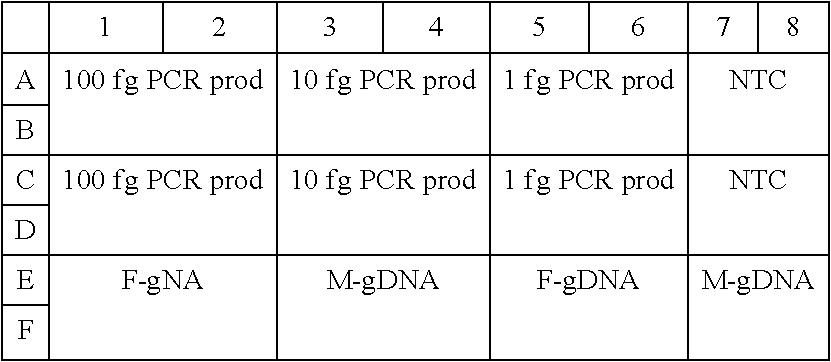Methods for targeted genomic analysis
a genomic analysis and genomic technology, applied in the field of genetic analysis, can solve the problems of affecting the quality of life of patients, and affecting the ability of patients to be informed, so as to achieve the vast potential of personalized medicine, and trigger acute disruptive events
- Summary
- Abstract
- Description
- Claims
- Application Information
AI Technical Summary
Benefits of technology
Problems solved by technology
Method used
Image
Examples
example 1
Preparation of Target Genomic Region for Genetic Analyses
Overview
[0311]In particular embodiments, the methods contemplated herein comprise the coordinated utilization of several key molecular modules. In the following section, each module is described separately. At the end of this section, the interconnection of modules is described.
Section 1: Tagging of Genomic DNA Fragments
[0312]Genomic DNA from an individual can be collected, processed into pure DNA, fragmented and random nucleotide sequences of one nucleotide or more, in some embodiments in the range of 2-100 nucleotides, or in the range of 2-6 nucleotides are attached to the random ends of genomic DNA fragments (FIG. 1). The combination of the introduced random nucleotide tag sequence together with the genomic fragment end sequence constitutes a unique combination of two elements that will hereafter be referred to as a the first region of the multifunctional adaptor module. The uniqueness of first region of the multifunctional...
example 2
Copy Number Determinations
[0341]Copy number determination finds a variety of uses in the field of DNA sequencing. By way of non-limiting example, massive parallel DNA sequencing technologies provide at least two opportunities to interrogate and analyze biological samples. One well-established aspect is determination of DNA sequences, meaning the de novo sequences present in the sample (e.g., the sequencing of a newly isolated microbe) or the resequencing of known regions for variants (e.g., the search for variants within known genes). A second aspect of massive parallel sequencing is quantitative biology and the ability to count the number of times a particular sequence is encountered. This is a fundamental aspect of technologies like “RNA-seq” and “CHIP-seq”, where counting is used to infer gene expression or the association of a particular protein with genomic DNA, respectively. This example relates to the quantitative, counting-based aspects of DNA sequencing.
[0342]DNA fragments ...
example 3
Construction of Single Adaptor Genomic Library
Purpose
[0346]The goal of this example was to create a genomic DNA library from acoustically fragmented ProMega female hgDNA (˜200 bp).
Summary
[0347]The results clearly demonstrated the significant features of the present methods for adaptor design. In particular, the adaptor-alone ligation reaction had no detectable adaptor dimer species present. This was very significant in the context of extremely low input sequencing library preparation technology, as with current methods, the limits of input are invariably determined by the background levels of adaptor dimer. Highly specialized technologies have been applied in attempts to keep adaptor dimer contamination in check. These include size exclusion methods such as columns or gel purification, expensive custom oligonucleotide modifications designed to minimize adaptor self-ligation events, and adaptor sequence modifications that allow for restriction digestion destruction of adaptor dimers ...
PUM
 Login to View More
Login to View More Abstract
Description
Claims
Application Information
 Login to View More
Login to View More - R&D
- Intellectual Property
- Life Sciences
- Materials
- Tech Scout
- Unparalleled Data Quality
- Higher Quality Content
- 60% Fewer Hallucinations
Browse by: Latest US Patents, China's latest patents, Technical Efficacy Thesaurus, Application Domain, Technology Topic, Popular Technical Reports.
© 2025 PatSnap. All rights reserved.Legal|Privacy policy|Modern Slavery Act Transparency Statement|Sitemap|About US| Contact US: help@patsnap.com



